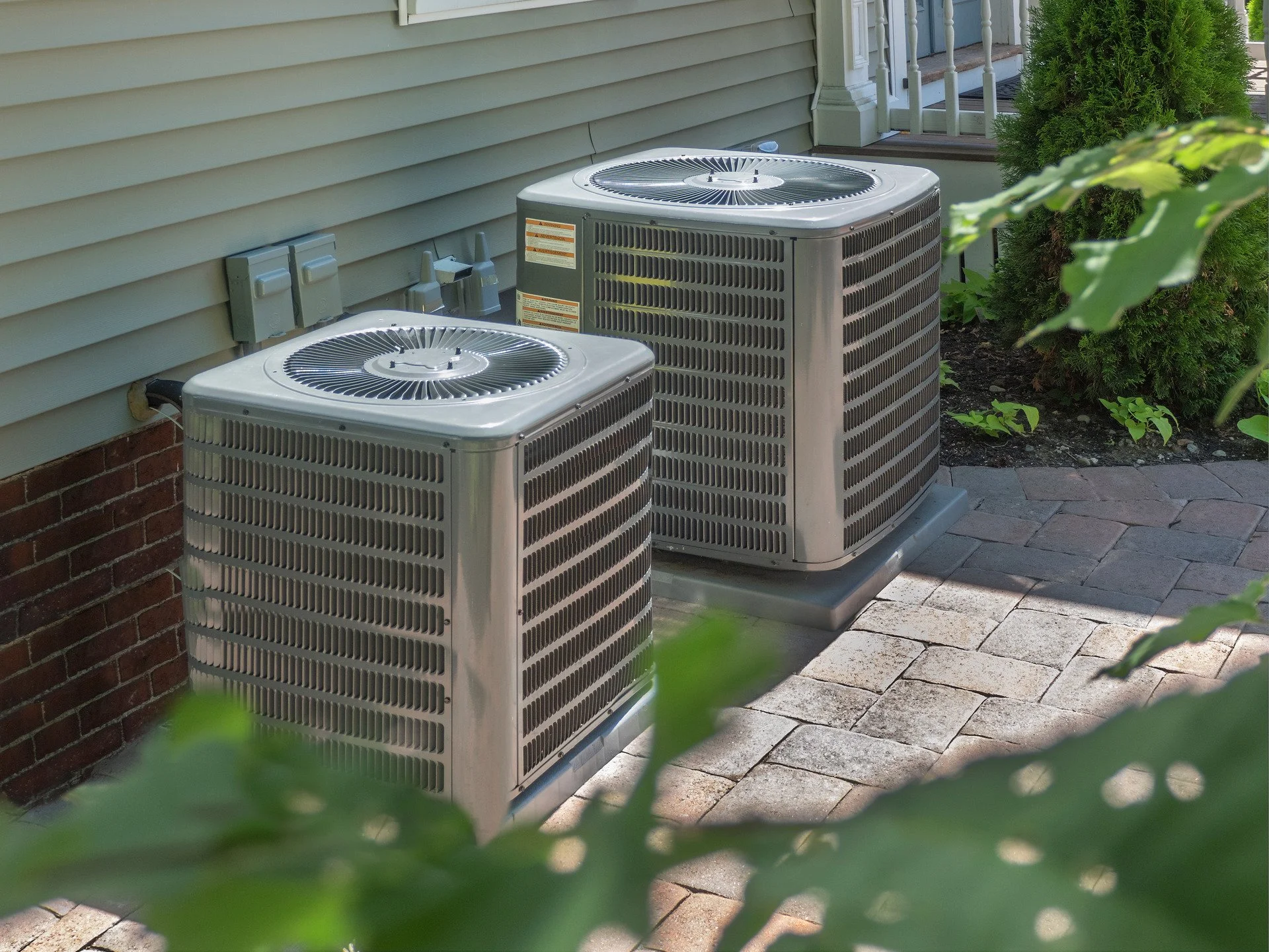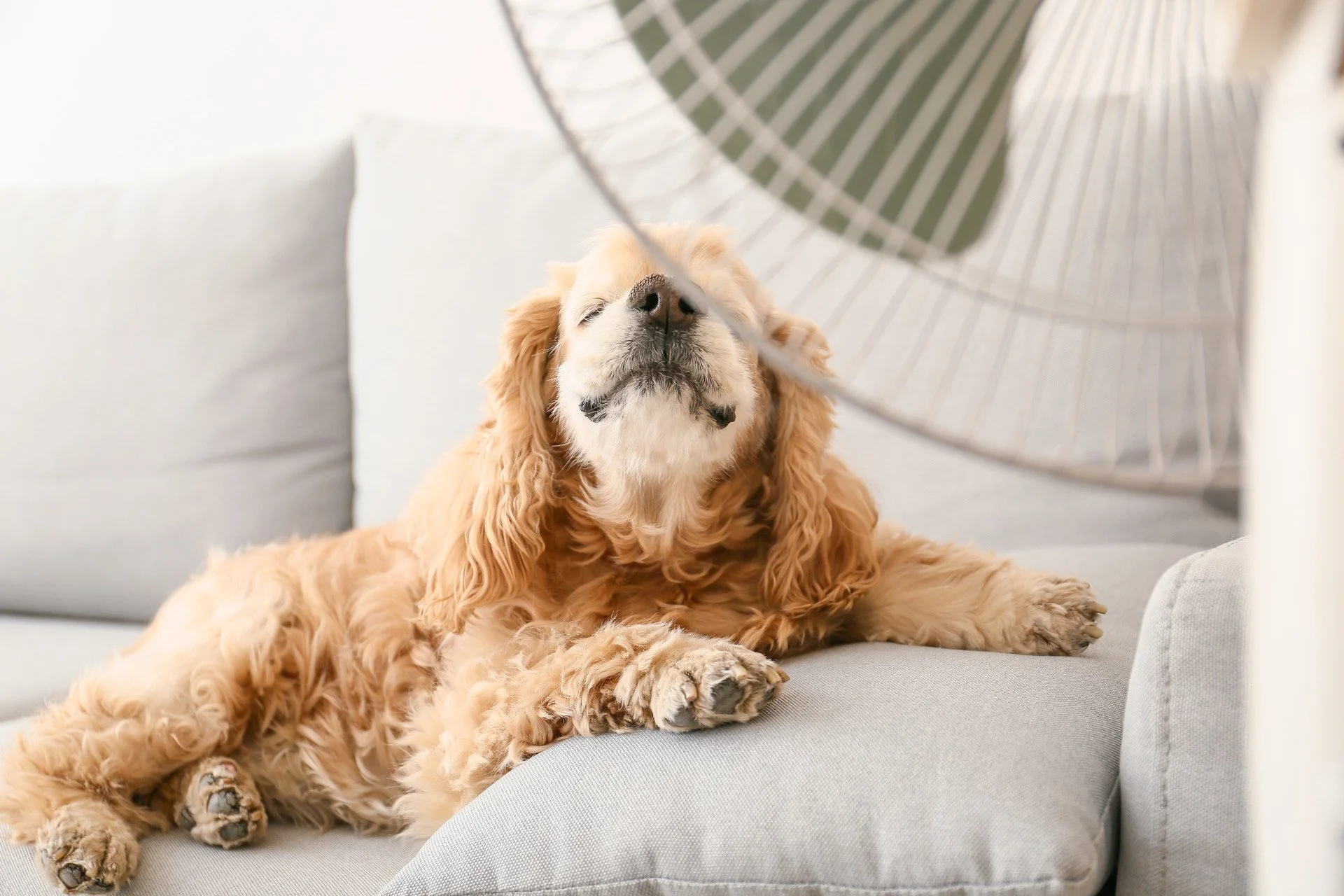Beating the Summer Heat: HVAC Design Features for Cool, Comfortable Custom Homes
It's been a scorching summer in Central Virginia. With temperatures approaching 100°F and heat advisories issued almost daily in July, staying cool has become more than just a matter of comfort—it's a necessity. While homeowners across Richmond work to keep their energy bills manageable and their families comfortable, there's never been a better time to consider how smart design choices can make all the difference.
When you're building a custom home with Keel Custom Homes, you gain a distinct advantage: the opportunity to incorporate cutting-edge cooling solutions from the ground up. Unlike retrofitting existing homes, custom construction allows you to include the newest HVAC innovations, smart zoning systems, and advanced air quality features that work together to make the perfect summer sanctuary.
From AI-powered climate control to whole-house dehumidification, the 2025 HVAC landscape offers exciting possibilities for homeowners looking to beat the heat efficiently and effectively. Let's explore how the right design features can transform your custom home into a cool, comfortable retreat—even during Virginia's most challenging weather.
Smart HVAC System Selection for Virginia's Climate
Heat Pumps: The Cooling Powerhouses
When it comes to keeping your custom home cool during Virginia's sweltering summers, modern heat pumps are leading the charge. Heat pumps operate like central air conditioners in summer months by moving hot air out of your home until your thermostat reaches your desired temperature. But they have a key advantage: they are designed for both optimal cooling and year-round efficiency.
For Virginia homeowners, efficiency standards are more important than ever. In Virginia's Southeast region, new air conditioners must have a SEER rating of 15 or higher or a SEER2 rating of 14.3 or higher. When choosing your system, a SEER2 of 15 to 17 provides a good balance between initial cost and energy savings, while 18+ SEER2 is a premium option, perfect for homeowners in hotter climates like ours.
The advantage of designing your HVAC system during custom home building is that you can optimize window placement and natural lighting to work with your cooling system, lowering the overall load and maximizing efficiency.
Dual Fuel Systems: Year-Round Efficiency with Summer Focus
While dual fuel systems are often discussed for their winter benefits, they are actually powerful cooling systems that include efficient backup heating. The economic threshold for homes to switch from a heat pump to a natural gas furnace is between 25°F and 45°F, which means the heat pump handles most of Virginia's climate requirements.
During our hot summers, when the furnace is inactive, the refrigerant cycle in the heat pump reverses, pulling heat from inside and transferring it outside. This provides you with excellent cooling performance from a system designed for efficiency year-round—a smart investment for Central Virginia's varied climate.
HVAC Zoning: Targeted Cooling Where You Need It Most
Solving the Hot Spot Problem
Every homeowner knows the frustration: while the main floor feels comfortable, the top floor can become hot and stuffy in the summer, and the basement remains cool. This is a common problem caused by the way heat naturally rises. Some homes face extra challenges, especially when they have large windows and open floor plans that are popular in modern design.
Rooms with large windows let in more sunlight, which can make those rooms hotter than the rest of the home. Without proper planning, these beautiful features can become comfort issues during Virginia's hot summer months. Luckily, multi-level homes can especially benefit from HVAC zoning systems that directly address these problems.
Custom-Designed Zoning Solutions
The power of HVAC zoning is in its precision. Zoned HVAC systems enable exact temperature control in different parts of your home, solving problems with uneven heating and cooling. For families building custom homes, this offers great flexibility—keep the primary suite cooler for better sleep, maintain comfortable temperatures in home offices during the day, and reduce cooling in seldom-used guest areas.
The financial benefits are just as significant. HVAC zoning systems save energy by enabling precise temperature control in different areas of your home, which can cut utility bills by as much as 30%. Considering Virginia's long cooling season, these savings add up quickly.
Perhaps most importantly for custom home builders, installing an HVAC zoning system is best when building a new home, as it can be designed with fewer dampers than a retrofit requires. This results in cleaner installation, better performance, and often lower overall system complexity.
Modern zoning systems seamlessly integrate with smart home technology, allowing you to control various zones through your smartphone, set schedules that align with your family's routines, and even receive alerts if any area of your home isn't maintaining optimal comfort.
Advanced Indoor Air Quality: Beyond Just Cooling
The Virginia Humidity Challenge
Central VA Humidex graph - humidex is an index to describe how hot the weather feels to the average person, by combining the effect of heat and humidity. Over 30 is uncomfortable.
Staying cool in Virginia isn't just about temperature — it's about managing our notorious humidity. Most people feel comfortable when indoor relative humidity (RH) is between 45% and 55% during the summer, but many homeowners struggle to reach this level. If you're feeling clammy, sweaty, and generally uncomfortable in your home even though you've set the thermostat to a supposedly comfortable temperature, your RH is likely above 60%.
The challenge is that while air conditioners do remove some humidity from the air as they cool your home, they're not specifically designed for this purpose. During Virginia's muggy summer days, standard cooling systems often struggle to effectively remove moisture, leaving your home feeling uncomfortable despite adequate cooling capacity.
Integrated Dehumidification Solutions
The answer is dedicated moisture control. Install whole-house dehumidifiers to remove excess moisture from the air. While air conditioners can help with dehumidification to some degree, summer humidity levels are often too high for them to handle effectively on their own.
The benefits go beyond just comfort. With a whole-home dehumidifier, your AC doesn't have to work as hard to maintain a comfortable temperature, which reduces strain and lowers energy bills. During those hot August days when humidity levels rise, your cooling system can focus on controlling the temperature while the dehumidifier takes care of moisture—a perfect partnership for Virginia's difficult climate.
Revolutionary Air Purification Technology
The HVAC industry is experiencing a revolution in indoor air quality (IAQ), with more heat pumps now featuring advanced air purification. Technologies like HEPA filters, UV-C light, and bipolar ionization are incorporated into units to address allergens, VOCs, and even pathogens.
UV-C technology provides significant benefits for summer comfort. The UV light kills airborne bacteria, viruses, mold, and more before they can spread. Using ultraviolet light for air purification has proven effective in hospitals, schools, daycare centers, restaurants, and hotels. For custom homes, this means cleaner, fresher air even when windows stay closed during the hottest summer days.
Today's integrated approach combines multiple technologies. Popular IAQ solutions include high-efficiency air filtration and purification systems to reduce allergens and contaminants, UV lights for disinfecting air and surfaces, and humidity control systems that work together to create the healthiest possible indoor environment.
Smart Technology for Summer Efficiency
AI-Powered Climate Control
The future of home cooling is here, and it's impressively smart. AI-powered thermostats learn your habits and automatically adjust the temperature to keep your home comfortable while saving energy. They also adapt settings based on the weather, ensuring efficiency throughout the year.
Imagine a system that knows you prefer the bedroom cooler at night, pre-cools your home before you arrive from work, and automatically adjusts when Virginia's unpredictable weather patterns change. These aren't futuristic concepts — they're available today, and the US smart thermostat market is projected to grow to $3.86 billion by 2029 as more homeowners discover their advantages.
Beyond comfort, smart systems offer peace of mind. With connected sensors and predictive analytics, HVAC systems can now notify homeowners of potential problems before they result in costly repairs. During Virginia's demanding summer months, this proactive approach can prevent uncomfortable breakdowns and expensive emergency service calls.
Seamless Home Integration
Modern HVAC systems seamlessly integrate with home automation. Many new systems also work with voice assistants like Alexa and Google Home, making temperature adjustments as simple as giving a voice command. Whether you're entertaining guests and need to quickly change the main level temperature or want to cool down the primary suite before bedtime, voice control makes managing the climate easy.
This integration extends to remote monitoring and control, enabling you to optimize your home's comfort and efficiency even when you're away. Pre-cool your home before returning from Richmond's summer festivals or adjust settings if your travel plans change—smart technology automatically keeps your home comfortable and efficient.
Design Considerations for Maximum Cooling Efficiency
Right Sizing Your System
One of the main benefits of custom home construction is the ability to tailor your HVAC system to your home's specific needs. Oversized AC units can lead to short cycling, where the system repeatedly turns on and off without effectively dehumidifying the air. This not only wastes energy but also fails to tackle Virginia's humidity issues.
During the design phase, collaborating with experienced professionals ensures your system is accurately calibrated for your home's cooling requirements, considering factors such as ceiling height, insulation levels, window placement, and local climate conditions. This precise approach, guided by Keel's comprehensive multi-step process, ensures optimal performance from day one.
Strategic Ductwork and Airflow Design
Custom construction enables optimal ductwork placement that isn't possible in retrofit situations. Strategic planning during the design phase ensures proper air distribution, prevents hot spots, and maximizes system efficiency. Sealed ductwork reduces energy loss, while well-designed return air strategies maintain consistent circulation throughout your home.
Working with our in-house designer during the planning phase allows you to integrate HVAC considerations with aesthetic choices, ensuring your comfort systems work seamlessly with your home's design vision. From register placement to equipment location, every detail can be optimized for both performance and appearance.
Environmental Considerations and Futureproofing
Embracing Cleaner Technology
The HVAC industry is undergoing significant environmental improvements. As of January 1, 2025, all new residential and light commercial air conditioners and heat pumps must restrict the use of higher-GWP HFCs and switch to environmentally friendly refrigerants. This transition means the HVAC industry will shift from R-410A refrigerants to alternatives with lower global warming potential (GWP), such as R-454B or R-32.
For custom home builders, this presents an opportunity to install the most environmentally responsible systems available while ensuring long-term durability and efficiency.
Investment Incentives
Federal incentives make high-efficiency cooling systems more accessible than ever. Through the Inflation Reduction Act, homeowners may be eligible for federal tax credits when upgrading to high-efficiency heat pumps. When combined with potential utility rebates and long-term energy savings, investing in premium cooling technology makes both environmental and financial sense.
Creating Your Cool, Comfortable Sanctuary
Virginia's summers will always be challenging, but they don't have to be uncomfortable. Custom home construction offers the unique opportunity to integrate the latest cooling technologies, smart controls, and air quality systems into a comprehensive comfort solution designed specifically for our regional climate.
From AI-powered thermostats that learn your preferences to whole-house dehumidification that tackles our humid summers, today's HVAC technologies work together to create an indoor environment that's consistently comfortable, highly efficient, and surprisingly healthy.
At Keel Custom Homes, we understand that your dream home should be a refuge from Virginia's extreme weather—a place where summer comfort is never in question. Whether you're interested in exploring our inventory of homesites in popular communities like Maple Grove or ready to build on your own land, our team is here to help you create the perfect custom home for Central Virginia living.
Ready to start planning your cool, comfortable custom home? Contact our team today to explore how these innovative cooling solutions can be incorporated into your dream home design. Your future self will thank you every time the temperature soars.





